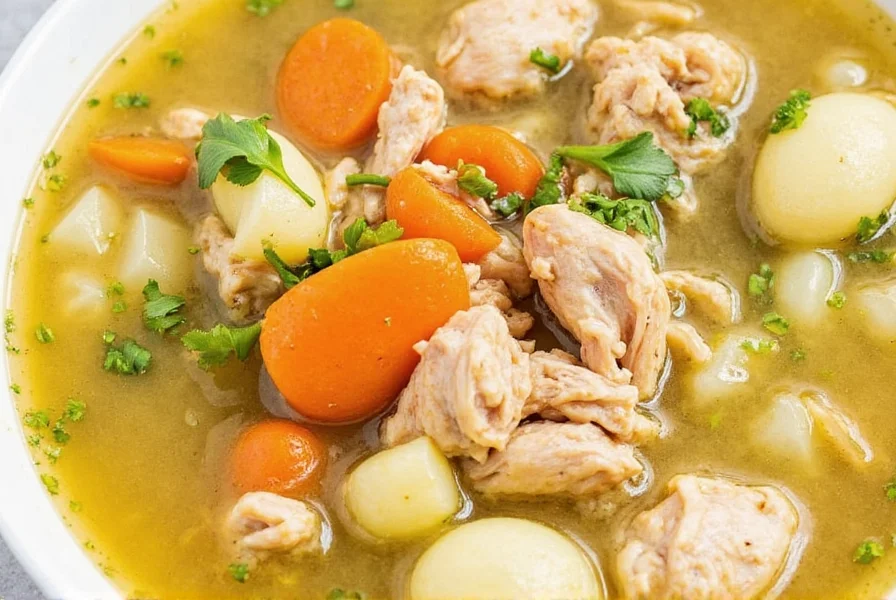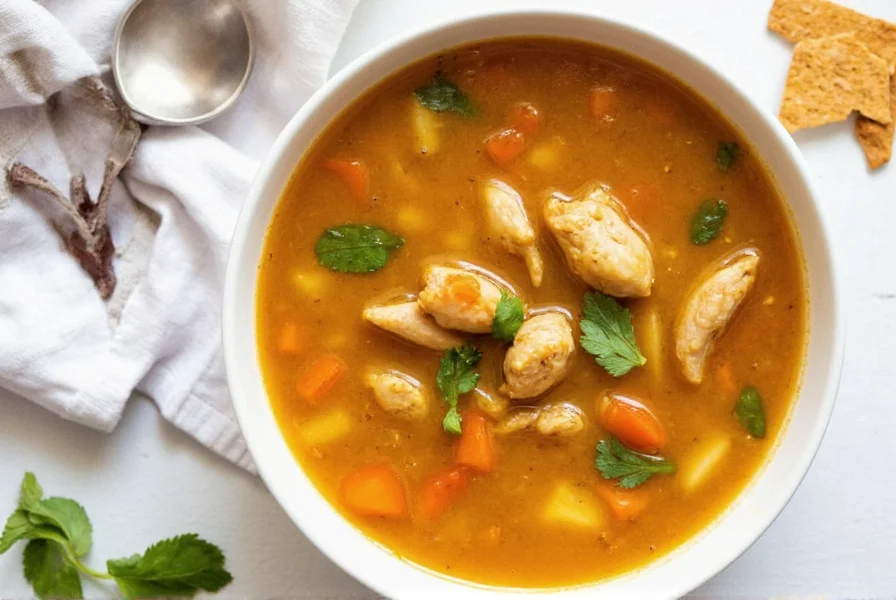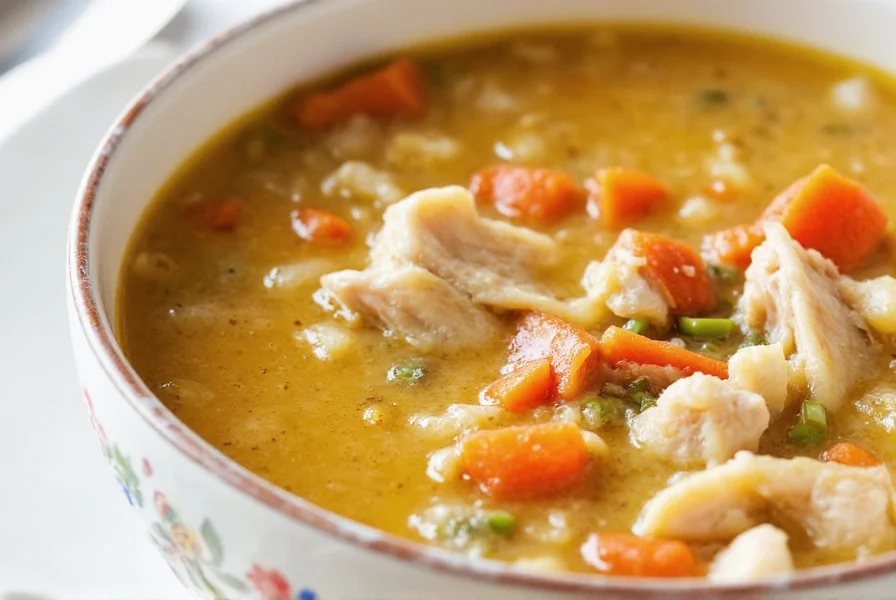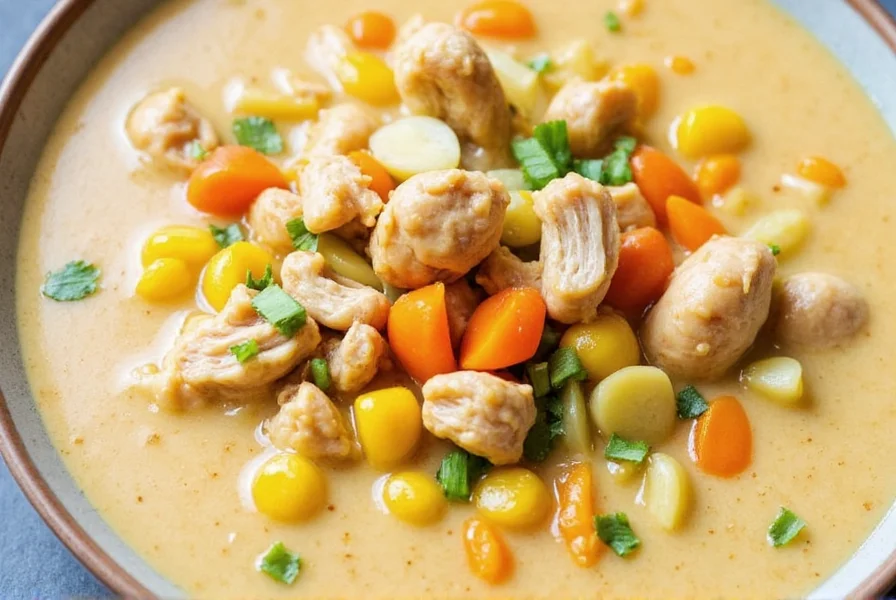- Why Spices Make or Break Chicken Soup
- Top 7 Spices and Seasonings for Chicken Soup
- Spice Comparison: What Each One Brings to the Table
- Pro Tips for Using Spices in Soup Like a Chef
- Buying Guide: Choosing the Best Spices for Chicken Soup
- Frequently Asked Questions About Chicken Soup Spices
- Final Thoughts: Spice Up Your Soup Game Today!
Why Spices and Seasonings Make or Break Chicken Soup
Chicken soup is the ultimate comfort food — warm, hearty, and perfect for any season. But if you've ever wondered why your homemade chicken soup doesn't quite taste like your grandma's (or the one from that cozy café), chances are it's not just the broth or noodles at play. The real secret lies in the spices and essential seasonings.
Spices are the unsung heroes of soup-making. They're the flavor boosters that turn a basic pot into a symphony of aroma and taste. Whether you're making a quick weeknight soup or simmering a rich bone broth, choosing the right chicken soup spices and seasonings can elevate your dish from 'meh' to 'mind-blowing.'
In this article, we'll explore the top 7 spices and seasonings that every chicken soup lover should keep in their pantry, how they enhance flavor, and when to use them for maximum impact. Plus, we'll throw in some pro tips and a handy buying guide so you know exactly what to look for next time you're shopping for spices.

Top 7 Spices and Seasonings to Add to Chicken Soup
Let's dive into the most essential chicken soup spices and seasonings. These aren't just random suggestions — each one has a specific role in balancing flavors, enhancing aroma, and creating depth in your soup.
- Salt – The foundational seasoning that enhances all other flavors and balances sweetness.
- Thyme – Earthy and aromatic, thyme brings warmth and a subtle minty undertone.
- Dried Bay Leaves – Adds a woody, slightly floral background that simmers beautifully.
- Black Pepper – Sharpens other flavors and adds a touch of heat and spice.
- Garlic Powder – Offers savory depth without the bite of fresh garlic.
- Onion Powder – Balances sweetness and savoriness, enhancing overall body and richness.
- Parsley – Fresh or dried, parsley adds brightness and a mild herbal note (best added at the end).
Spice Comparison: What Each One Brings to the Table
To help you understand which spices work best for different flavor profiles, here's a handy comparison table showing each spice's key characteristics:
| Spice/Seasoning | Flavor Profile | Best For | Usage Tip |
|---|---|---|---|
| Salt | Savory, enhances other flavors | Foundational seasoning for all soups | Add gradually; taste after each addition |
| Thyme | Earthy, herbal, slightly minty | Building depth and warmth | Simmer with broth for full extraction |
| Bay Leaf | Woody, slightly floral | Background complexity | Remove before serving |
| Black Pepper | Spicy, sharp | Enhancing other flavors | Grind fresh for better flavor |
| Garlic Powder | Savory, pungent, umami-rich | Adding depth and body | Mix with oil first to avoid clumping |
| Onion Powder | Sweet, savory, caramelized notes | Boosting overall flavor balance | Combine with garlic for classic base |
| Parsley | Fresh, green, slightly peppery | Adding freshness and color | Add toward the end to preserve flavor |

Pro Tips for Using Spices in Soup Like a Chef
You've got the spices — now how do you make the most of them? Here are some expert-level tips to get the most flavor from every sprinkle:
- Bloom your spices: Toast ground spices like garlic powder or onion powder in a little oil before adding liquid. This unlocks more volatile flavor compounds.
- Layer flavors: Start with earthier spices like thyme and bay leaves early in cooking, then finish with brighter ones like parsley and pepper near the end.
- Use salt wisely: Salt enhances all flavors, but go easy. Add gradually and taste after each addition. Some spices like celery seed already contain natural sodium.
- Taste as you go: Always taste after adding each spice. Adjust ratios to suit your palate.
- Don't forget fresh herbs: If using fresh thyme or parsley, chop them finely and add during the last 5–10 minutes of cooking for maximum impact.
Buying Guide: Choosing the Best Spices for Chicken Soup
Not all spices are created equal. When shopping for the perfect blend of chicken soup spices, consider these factors to ensure quality and potency:
What to Look For
- Freshness date: Spices lose potency over time. Check packaging for "best by" dates.
- Aroma intensity: Smell your spices before buying. A strong, vibrant scent means the flavor is still active.
- Packaging type: Opt for airtight containers that protect against moisture and light exposure.
- Whole vs. ground: Whole spices like bay leaves and whole thyme sprigs often have longer shelf life and richer flavor than ground versions.
Top Picks for Chicken Soup Enthusiasts
Here are a few standout products that serious soup lovers swear by:
- McCormick Culinary Bay Leaves – Dried whole bay leaves with rich aroma and consistent size.
- Rogar Thyme Ground – Sustainably sourced, with a bold yet balanced earthy flavor.
- Frontier Co-op Celery Seed – Organic, non-GMO, and incredibly potent.
- Northern Spices Garlic Powder – Made from premium California garlic with no additives.
- Simply Organic Onion Powder – Certified organic, with sweet, mellow notes ideal for soups.
Who Should Buy What?
- Home cooks: Go for trusted brands like McCormick and Simply Organic — affordable and widely available.
- Foodies & chefs: Invest in small-batch or artisanal spice brands like Rogar or Northern Spices for superior flavor depth.
- Organic fans: Choose certified organic options to avoid synthetic chemicals and additives.
When to Use Which?
- Quick soup: Pre-ground spices like garlic and onion powders save time and dissolve easily.
- Slow-cooked broth: Whole spices like bay leaves and fresh thyme stems infuse deeper flavors over time.
- Vegetarian or vegan version: Substitute chicken with vegetable stock and amplify with extra herbs and spices for richness.

Frequently Asked Questions About Chicken Soup Spices
Here are answers to some of the most common questions home cooks have about using spices in chicken soup:
When is the best time to add spices to chicken soup?
The timing depends on the spice. Hardier spices like bay leaves, thyme, and whole peppercorns should be added early in the cooking process to allow their flavors to fully develop. Delicate herbs like parsley and fresh dill are best added in the last 5-10 minutes of cooking to preserve their bright flavor and color. Dried spices like garlic and onion powder can be added midway through cooking. Salt should be added gradually throughout cooking, with the final adjustment at the end.
How much of each spice should I add to chicken soup?
As a general guideline for a standard 8-cup batch of chicken soup: use 1-2 bay leaves, 1 teaspoon dried thyme (or 4-5 sprigs fresh), 1/2 teaspoon celery seed, 1/2 teaspoon garlic powder, 1/2 teaspoon onion powder, 1/4 teaspoon freshly ground black pepper, and 1/2 teaspoon salt (adjust to taste). Always start with less - you can add more as you go. Remember to taste and adjust seasoning toward the end of cooking.
Can I substitute fresh herbs for dried spices in chicken soup?
Yes, but with important considerations. As a general rule, use three times the amount of fresh herbs as you would dried (for example, 1 teaspoon dried thyme equals about 1 tablespoon fresh thyme). Fresh herbs are more delicate, so add them later in the cooking process. Note that some spices like celery seed don't have a direct fresh herb equivalent - you'd need to use actual celery stalks instead. Salt should never be substituted with fresh herbs.
What's the difference between using garlic powder and fresh garlic in chicken soup?
Garlic powder provides consistent, mellow garlic flavor throughout the soup without the sharp bite of fresh garlic. It's convenient and dissolves easily. Fresh garlic offers more complex flavor but can become bitter if overcooked. For best results with fresh garlic, sauté it briefly before adding liquid or add it in the last 20 minutes of cooking. Many chefs use a combination of both for layered flavor.
How should I store spices to keep them fresh for chicken soup?
Store spices in airtight containers away from heat, light, and moisture. The pantry is better than above the stove. Whole spices (like bay leaves) last 1-2 years, while ground spices retain best flavor for 6-12 months. To test freshness, rub a small amount between your fingers - if the aroma is weak, it's time to replace them. Properly stored spices make a noticeable difference in your chicken soup's flavor.
Are there any special spice considerations for dietary restrictions?
For low-sodium diets, focus on herbs like thyme, parsley, and bay leaves which add flavor without salt. Celery seed can be reduced or eliminated if you're watching sodium. For keto or low-carb diets, most spices are naturally suitable. If making chicken soup for someone with garlic or onion sensitivities, try alternatives like asafoetida (hing) which provides similar savory notes without the alliums. Always check spice blends for hidden ingredients if you have specific dietary concerns.
Final Thoughts: Spice Up Your Soup Game Today!
Chicken soup is more than just a meal — it's comfort, healing, and nostalgia in a bowl. And with the right spices and seasonings, you can unlock its full potential. From thyme to bay leaves, each spice plays a unique role in building layers of flavor that will impress even the pickiest eaters.
Whether you're a seasoned chef or a home cook looking to upgrade your weekday dinner routine, mastering the art of spice is the key to restaurant-quality results. Now that you know the best chicken soup spices to add and how to use them, it's time to get creative and make every spoonful unforgettable.
So next time you reach for the stockpot, don't forget the spice rack. With a pinch of this and a dash of that, you'll be well on your way to crafting the coziest, most flavorful chicken soup anyone's ever tasted.











 浙公网安备
33010002000092号
浙公网安备
33010002000092号 浙B2-20120091-4
浙B2-20120091-4